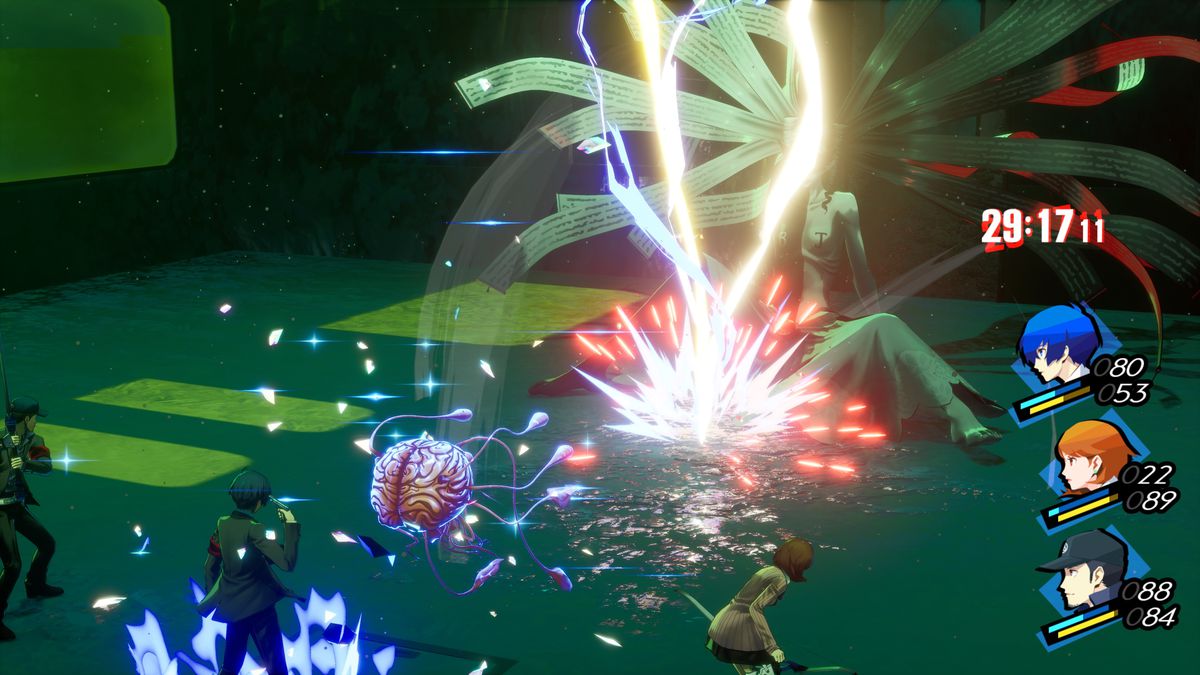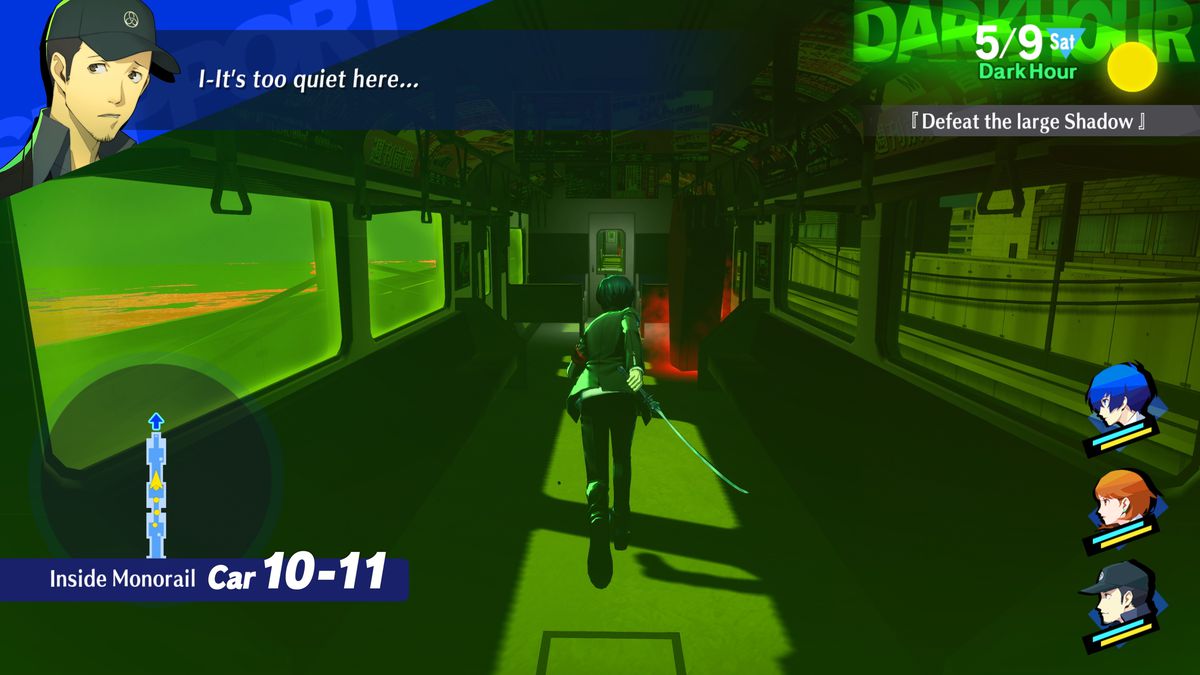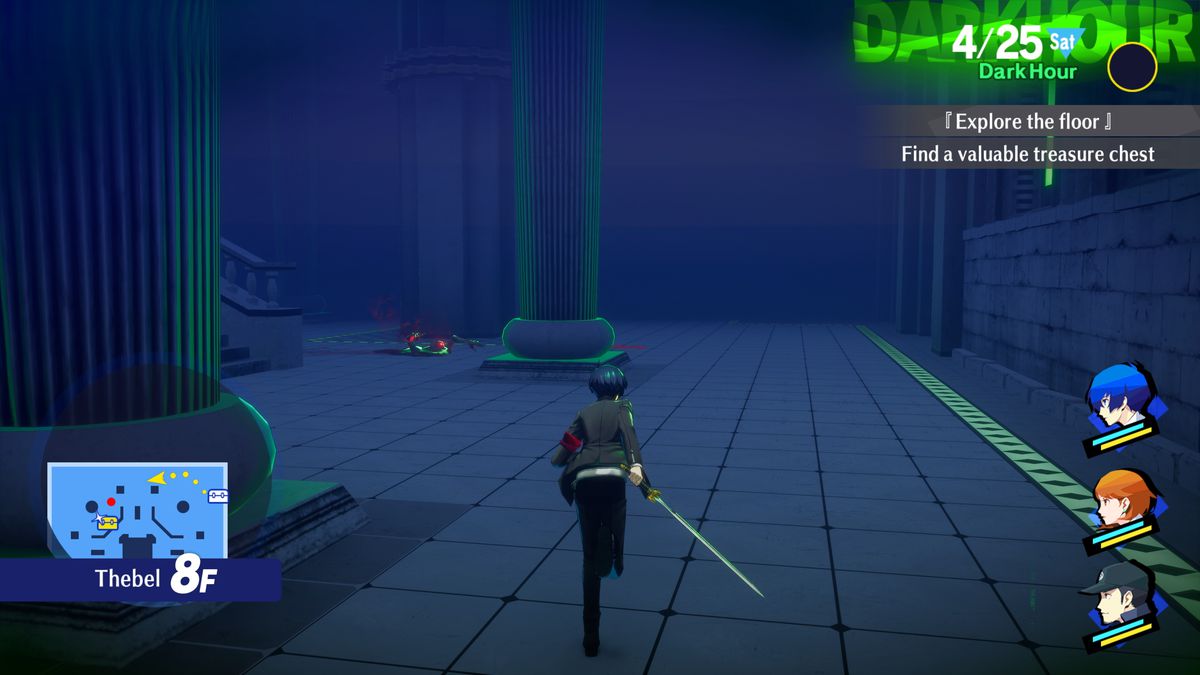On its face, Persona 3 Reload is such a tantalizing idea: bringing the series’ defining game up to the polish of Persona 5 Royal, allowing the legions of newly converted Persona fans to experience what makes it so special. As I said when I reviewed the remaster of Persona 3 Portable earlier this year, it takes work to get to the end, but the complicated, messy, weird story is worth it.
But after playing a small slice of the game at a New York-based preview event, I have some concerns, namely about whether Persona 3 Reload might struggle to strike the balance between being an “accurate” remake while still upholding what players would expect from a modern Persona title.

I’ll say that some of these feelings sprang from my surprise that Atlus is choosing to remake the original version of Persona 3. This was before 2009’s Persona 3 Portable got a playable female protagonist, with her own social links and romance options. That has never carried into a later version of Persona, even as each version received a massive, game-defining re-release that renders the original nearly obsolete. The cynical part of me wonders if they’ll do the same thing with Reload — add in a female protagonist three to five years later in Persona 3 Reload Ultra Deluxe — but that seems like a recipe for fan frustration.
But I still strapped in for the 30-minute demo, which included two slices: New Moon, which let me explore the starting floors of the procedurally generated, multi-floor dungeon Tartarus in all its remade glory; and Full Moon, which put me up against the first boss in its story. The visual facelifts extend to the menus, which are updated with the same splashy treatment as Persona 5, while still adhering to Persona 3’s blue-dominant color palette. Seeing both the Tartarus entrance hall and the runaway monorail platform with new backgrounds and a higher frame rate was a treat. But both areas also were remarkably empty.

Tartarus is the genesis for Persona 4’s dungeons, and is closer to Persona 5’s repetitive Mementos stages rather than its complex palaces, but seeing its hallways rendered from a new perspective — more of an over-the shoulder 3D rather than the original god’s-eye view — made the contrast rather stark. There just isn’t much going on in Tartarus. It’s a twisted version of a high school with a few enemy shadows lurking. And the structure was so repetitive that I got turned around fairly easily. The train battle sends my party down long, straight stretches with few visual distinctions and only a couple enemies per section. This hews very close to the original game, but is barren by modern standards. Persona 3 had less going on than later games in the series, but there is something much more striking about that lack of substance modernized.

Combat presented me with a mix of old and new. Thankfully, the demo defaulted to letting me control the actions of each of my party members off the bat, which wasn’t even an option in the entirety of the original Persona 3. The combat consisted of the same turn-based battles, with easily navigable menus — another credit to Persona 5’s new precedent. I noticed that physical damage was still divided into three types (strike, slash, and pierce), which was a system dropped by later games, though. I didn’t perform a baton pass, but was told by an Atlus representative that the feature has been added to battles. And Shuffle Time, the post-battle reward system where players must pick their desired loot from a card shuffling shell game, now simply allowed me to select the reward card I wanted. And the strategy of targeting your opponent’s weaknesses with elemental magic or physical damage remains the same; it’s so familiar, in fact, that I was frustrated I couldn’t kill the final boss quickly. (She’s difficult, just like in the original, unless you’re like me and grind to over-prepare for every boss fight.)
I don’t want to extrapolate too much from my demo, because I didn’t see any aspects of the daytime gameplay — the school, social links, or after-school activities. But one of my prevailing complaints when playing Persona 3 Portable’s remaster was the lack of variety in its daily-life segments when stacked up against the other games. Will Atlus remain faithful to the core text, or add in the robust level of activities and social links someone coming from Persona 5 will expect? Persona 3’s story is dark and impactful, but it was originally told within the confines of certain gameplay conceits. I worry that the task of remaining faithful to the original will preclude the things I expect from a modern RPG.
Persona 3 Reload is out “early 2024,” and its announced platforms include PlayStation 5, Windows PC, and Xbox Series X. It will also be coming to Xbox Game Pass.
- SEO Powered Content & PR Distribution. Get Amplified Today.
- PlatoData.Network Vertical Generative Ai. Empower Yourself. Access Here.
- PlatoAiStream. Web3 Intelligence. Knowledge Amplified. Access Here.
- PlatoESG. Automotive / EVs, Carbon, CleanTech, Energy, Environment, Solar, Waste Management. Access Here.
- PlatoHealth. Biotech and Clinical Trials Intelligence. Access Here.
- ChartPrime. Elevate your Trading Game with ChartPrime. Access Here.
- BlockOffsets. Modernizing Environmental Offset Ownership. Access Here.
- Source: https://www.polygon.com/23841928/persona-3-reload-remake-hands-on



